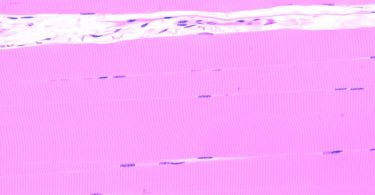The most important difference between cache and backup is how they are used. A cache is a temporary storage area that stores data or information often used to speed up processing and reduce loading times. It makes it easier to get data because you don’t have to get it from the original source. On the other hand, backup is the process of making a copy of data or files to protect them from being lost or changed. Backups make it possible to get your data back in case you accidentally delete it, your hardware fails, or you lose it in some other way. This gives important information a safety net.
What is Cache?
A cache is a temporary storage space that computers, apps, and other devices use to store data or information they use often. This improves overall performance and speeds up loading times. It makes it easier to get to data by eliminating the need to get it from the original source or do the same calculations repeatedly.
Caching can happen at different levels in a system, such as in the processor cache (L1, L2, or L3), the web browser cache, or the application cache. The processor cache stores instructions and data that have been used recently to reduce the time it takes to access the slower main memory. Web browsers store images, scripts, and other parts of web pages in their cache to load faster on future visits. The application cache stores data locally so that it doesn’t have to be pulled from databases or APIs.
Caches work based on the idea of “temporal and spatial locality,” meaning that data that has been used recently or is close by is more likely to be used again soon. Data in the cache is updated or replaced at regular intervals based on specific cache policies, such as LRU or “first-in, first-out” (FIFO).
A cache is a temporary storage area used to store data that is often accessed. It improves the performance and efficiency of computers, apps, and devices by reducing the time it takes to get data and the number of times it has to be calculated.
What is Backup?
A backup is a process of making a copy of data or files in case they get lost or damaged. It’s a safety measure to ensure you can get your data back if you delete it by accident, if your hardware breaks, if there’s a natural disaster, if someone hacks your device, or if your data is lost in some other way. People and businesses can protect their digital assets and keep doing business if they back up important information regularly.
Different methods, like full, incremental, and differential backups, can be used to make backups, depending on the needs and resources available. Data can be kept on different media types, such as external hard drives, tapes, the cloud, or remote servers.
In addition to the actual process of backing up, a well-designed backup strategy should also include testing and verifying the data that has been backed up regularly to make sure it is correct and reliable. This helps ensure the data can be restored successfully when needed.
Data backup is integral to business and personal disaster recovery plans and risk management. Implementing a solid backup plan and keeping up-to-date copies of essential data helps reduce downtime, prevent data loss, and ensure that critical information is always available, even if something unexpected happens or the system fails.
Difference Between Cache and Backup
Cache and backup are used to store data; however, they serve very different purposes, have different storage times, and store different kinds of data. The efficiency of the system, information availability, and sensitive data safety are all affected by these variations.
Purpose
Whereas backup is concerned with safeguarding information against loss or damage, a cache enhances processing speed and reduces loading times by temporarily storing often-used data.
Function
By storing data that may be rapidly accessible, caching reduces the time spent waiting for it to be retrieved from its original location. In case of data loss due to deletion, hardware failure, or other causes, a backup can be used to restore the lost information.
Storage Duration
The data stored in a cache is only transitory and is either updated or replaced at predetermined intervals determined by the cache’s policies. Data stored in a backup is kept indefinitely until the user deletes or overwrites it.
Type of Data
A cache is a temporary storage space for material accessed frequently, such as parts of a website, programme instructions, or data used in a specific operation. To safeguard against the inaccessibility or corruption of critical data, it is recommended to back up your system regularly.
Caching and backup play crucial roles in maximising system efficiency and securing digital assets. Although backup safeguards critical information by making permanent copies for restoration purposes, cache improves system efficiency by preserving frequently requested data temporarily. In conclusion, cache and backup differ fundamentally in terms of their intended use, their specific tasks, the length of time they retain data, and the particular information they keep.






